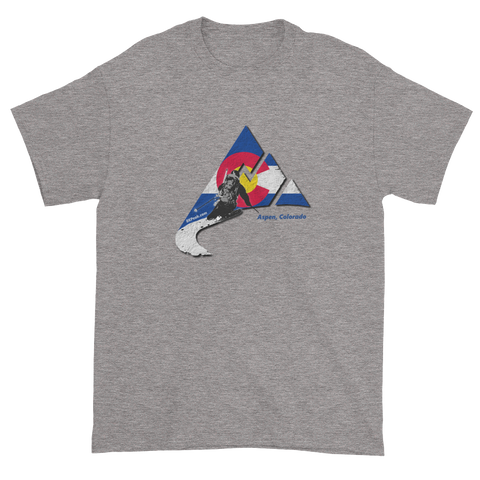http://www.amazon.com/Shishapangma-Expedition-Doug-Scott/dp/0246120134

I found myself stuck in the middle of tropical storm Billy Bob down in Mexico recently, and after finishing a handful of books on my kindle, I downloaded a book, “Shishapangma” by Doug Scott and Alex Macintrye. The book was first published in 1984, but was published again in 2014 which to my delight included the digital version. Having a connection to this peak with a first USA ski descent from an 8,000 meter peak along with my brother Steve Marolt and good friend Jim Gile in 2000, it caught my attention. I had tried to find a copy for years, so finding it while surfing my Kindle was super.

Shishapangma is the 14th highest peak in the world at 26,335 feet. It is the only 8,000 meter peak that sits entirely in Tibet. It was first climbed in 1964 by a massive Chinese team. Tibet remained closed to foreign travelers for decades, but in the early 80’s it was opened up for tourism, specifically mountaineering. For a team of British mountaineers, the draw of unknown Tibet and the 8,000 meter peaks was immense.
Through the 60’s and 70’s, big mountain mountaineering really evolved into the place for Europe’s greatest mountaineers to take the sport to the highest levels. Names like Joe Brown, Don Whillans and Chris Bonnington lead expeditions to the highest peaks with a new alpine style that took on the massive walls of the Himalaya in great contrast to the standard expeditions of the day that pioneered mountaineering via large scale projects to these peaks on more standard routes. By climbing the great walls of Europe, style, technique and frame of mind lead climbers to the Himalaya in a manner that was both unheard of and daunting. Between the initial big Himalayan wall climbs of the day and the 80’s, Doug Scott was the beneficiary of the older generation of pioneers, and he developed the desire and skills to push things further. Scott transformed as the apprentice of the greats to being the father of the next generation of young guns.
For Shishapangma, the south face of Shishapangma became an obscure objective with literally no beta for route to the base camp let alone the face. No one had ventured into this area of Tibet, and the draw of Tibet and the peak were immense. Scott found himself as the mentor for the next generation of British hot shot mountaineers in Alex MacIntyre and Roger Baxter Jones, about a decade his junior. They obtained permission to make the expedition, and set out to find sponsorship for the expedition literally up to the night before they were to fly to China.

From the get, the expedition was the quintessential climbing bum expedition with an all-in-do-what-it-takes effort to do something big. Big at the time was defined by the major known peaks such as Everest, and selling the expedition to sponsors was a monumental task. People with the means had never heard of the peak, and to anyone outside of hard core mountaineering, the magnitude of the project was only defined by the names of the climbers, and it was not of great interest. But reputation of these mountaineers prevailed, and by the skin of their necks, they were off.
Once in Tibet, the budget, or lack thereof, ruled everything. The Tibetan Mountaineering Association had little or no faith in the team’s ability to pull off such a project, and starting with the liaison officer assigned to accompany the expedition, help was far and few between. Previous massive scale expeditions had set the table for unlimited budgets, but the money grab was clearly not to be had with this expedition. The Chinese pushed to squeeze funds out of the expedition that didn’t exist, and the result was disbelief and inability to care for the wellbeing of the expedition. The team persists in the low budget approach, and in contrast to normal expeditions that utilized multi car and bus caravans that greased the pockets of so many locals, achieved loading all gear and members into a single truck, and headed to Nylam in what then was on rough dusty roads for nearly a week.
Upon arrival to Nylam, a village located near the continental divide of the Himalaya, the expedition was met with skepticism, and very apparent lack of money. This was combined with the community’s lack of experience in facilitating expeditions which created massive problems. No one had ever made the trek to this base camp, and finding yaks let alone herders to help haul their gear to base camp was a near disaster. Black sheep yaks of the herd combined with inexperienced youth herdsmen were assigned the duty of getting the expedition to base camp, and the weak yaks were not nearly up to the task of hauling massive loads, nor were the herdsmen even remotely aware of how to handle the weak beasts. Arguments pursued, and better yaks arrived with senior herders that eventually helped get the expedition to base camp, but in the process, set the expedition behind schedule in terms of weeks. Added to the nightmare, the liaison claimed the base camp was well above 18,000 feet, the limit to where a base camp could be placed. Maps and altimeters proved that it was actually below the limit, and it is found that in reality, the officer is suffering from an ailment preventing him from hanging out at altitude. The expedition sets up a lower camp for the liaison, and sets to climbing the mountain. But it is clear that for a project of this magnitude, nothing has gone right.
Tempers flare, and the easy going Scott is the brunt of skepticism from the “youth” of his partners, in what amounts to a bit of a midlife crisis. Scott has bad knees from a previous expedition and tends to lead to rock where the youth see ease of entry on ice and snow. Scott comes to the conclusion that he is not appreciated and bows out. Alex and Roger see they have insulted one of Brittan’s true legends, see the error of their ways, and realize they need the wisdom of Scott to achieve ultimate success. The team changes gears, generates cohesion, and sets out to achieve greatness.
In the end, after first descents on sub peaks, and stocking the descent routes, the team finds themselves on task, climbing the massive wall of Shishapangma. The book is a compilation of the words of the individual members writing after the fact and from journals. What this does for the reader is to give insight in the difficulties as well as the spirit of what this team experiences in their journey. The stand out contrast of the insights from three individuals paints a picture of immense respect for what they are setting out to do, but also depicts the intense brotherhood of the mountain. Despite the hurdles this expedition experiences literally around every corner to get to the mountain, once they are on the mountain, it is clear that this is a team of some of history’s greatest mountaineers coming together to pull off one of mountaineering’s greatest achievements. Despite the magnitude of these mountaineers as leading individuals in the sport, there is definitely no I in team. It is clear that the threesome is the secret sauce in the ultimate success they achieve.
For the modern mountaineer, the respect this generation had for climbing the highest peaks in the world is something that is diluted today. For me, and I believe the reader, this book sets the table for the reality that while techniques and gear have made ease of entry to the highest peaks in the world significantly different than in the past, those mountains have not changed. By reading about the approach of these greats, and seeing how they persevered both getting to the mountain, and then while on the route, Shishapangma is a classic read, despite the book and the expedition’s relative obscurity. It’s a fantastic journey that takes a reader to a place mentally, spiritually, and physically that is both inspiring and interesting. This book is a classic on many levels.


